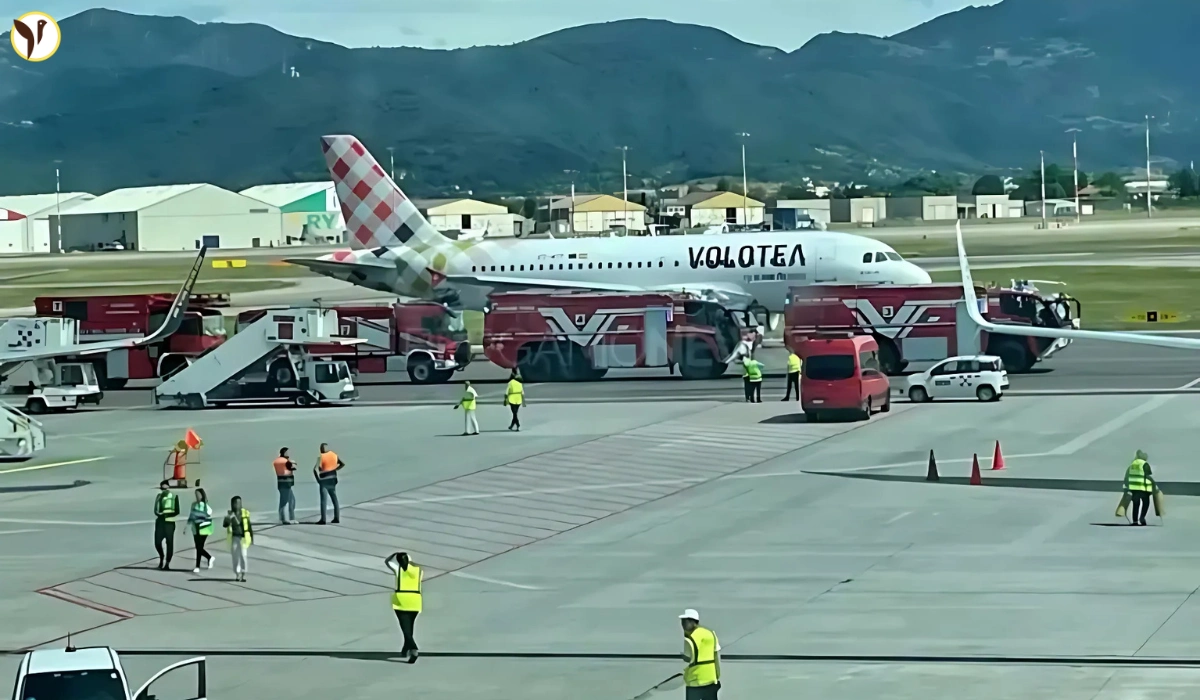It was around 10:20 am on Tuesday morning when the busyness of Milan–Bergamo-Orio al Serio airport abruptly came to a complete halt. A man appeared on the taxiway and was ultimately ingested by the engine of a Volotea Airbus A319 that was in the process of pushing back and heading for departure. The entire airport came to a standstill. Flights were cancelled across the board immediately after the incident, and the airport operator SACBO suspended all operations while authorities attempted to learn exactly what had occurred. By midday, things had slowly returned to a state of new normal—but the aftereffects of the incident were still very much there. You could sense it in the tariffs, the quiet whispers about what had transpired. It was quite the shocking incident, as it is one that happens to the crew and to-there-that day 西 where there will always be an aftereffect.
Who was the man and how did he get there?
No one knows his identity yet. Rumors suggest he was in his mid‑30s and possibly a trespasser, though some wonder if he was airport staff or a passenger who wandered in by mistake. What’s clear is that he ended up too close to a moving plane. There are still questions—why did he go there? How did security miss him? Airports usually have fences, warning signs, CCTV, patrols. But on a busy morning, amid all the hustle, gaps can appear. People online worry: is the taxiway too easy to access? Could this happen again?
Flights diverted and passengers stranded
In just ten minutes all flights stopped. Some 9 to 19 flights were rerouted. Planes meant for Bologna, Verona, Malpensa and other cities were forced to circle or land elsewhere. Passengers scrambled—some stuck in limbo, others reunited later. Social feeds lit up:
19 flights have been canceled at Milan Bergamo Airport (BGY) due to the incident on the apron disrupting air traffic, according to FR24 data. pic.twitter.com/Fs5Xa89hhd
— Vanguard Intel Group 🛡 (@vanguardintel) July 8, 2025
The effect rippled beyond Bergamo. Airports in Milan felt it too. People had to rebook trains, flights, figure out new plans. For a modern airport built on tight schedules, a single incident can ripple far and wide.
Why this incident matters more than just disruption
This isn’t just about delayed flights or inconvenience. It’s about safety, about trust. People expect airports to be secure, to protect both workers and travelers. One moment a normal morning, the next moment a life is lost. That kind of fear sticks. It raises big questions:
-
Was security enough? Or was someone able to sneak past?
-
Could fatigue or miscommunication in ground operations have played a part?
-
Will airport staff feel more stressed, or travelers nervous?
When real tragedy hits ground level like this, it forces change. And if things don’t improve, confidence might crumble.
Malpensa’s green upgrades provide a hopeful contrast
While Bergamo’s day was marred by tragedy, just 50 km away things were quietly moving forward at Malpensa. It’s not a flashy scene, but one full of purpose and hope:
-
Bike Corner for eco‑travelers: At Terminal 2, a spot for cyclists to fix bikes, pump tires, and jump onto scenic local routes for free, 24/7.
-
Hydrogen fueling for vehicles: A partnership with Edison Next is turning one corner of the airport into a green hydrogen refuel station. By 2026, it should power cargo trucks and shuttle buses with clean energy.
-
Massive €30 million upgrades: Ahead of the 2026 Winter Olympics, Malpensa is investing heavily—upgrading terminals with greener lighting, seating with charging ports, bus hubs for easier access, and spaces built without barriers for all.
These steps may sound small, but they show long‑term thinking. While Bergamo fixes a sudden crisis, Malpensa is shaping a safer, cleaner future.
What people online are saying
Some posts on X worry the tragedy could have been avoided. Others applaud Malpensa’s efforts to go green. Here are real reactions people shared online today:
BREAKING: Milan Bergamo Airport (Orio al Serio) halts all flights on July 8, 2025, after a ground crew member was fatally sucked into a jet engine during routine operations on the taxiway. Emergency services responded; incoming flights diverted to Milan Malpensa and Bologna.… pic.twitter.com/FyYDNfdOsz
— Laszlo Varga (@LaszloRealtor) July 8, 2025
It shows how public attention splits between grief and hope—the human reaction to both tragedy and progress.
What’s next for Milan’s airports
-
Bergamo’s priority will be a full safety review. Authorities will check surveillance systems, barriers, staff training. They need to rebuild trust, fast.
-
Malpensa will keep building momentum toward hydrogen vehicles and passenger comfort. Its Olympic‑year upgrades must track ahead of schedule.
No one can stop incidents fully. But airports can learn. Bergamo must tighten things. Malpensa’s showing us airports aren’t just hubs—they’re communities that can lead on safety and sustainability.
Bullet Point Summary
-
A man died at Bergamo airport after entering taxiway during plane pushback.
-
Flights paused; many diverted, some canceled.
-
Identity and motive unknown; investigation is active.
-
Online worry about taxiway access and ground‑staff fatigue.
-
Malpensa adds Bike Corner and green hydrogen efforts.
-
€30 m upgrades ahead of 2026 Olympics boost accessibility and eco‑travel.
-
Public reacts with heartache and cautious optimism.









